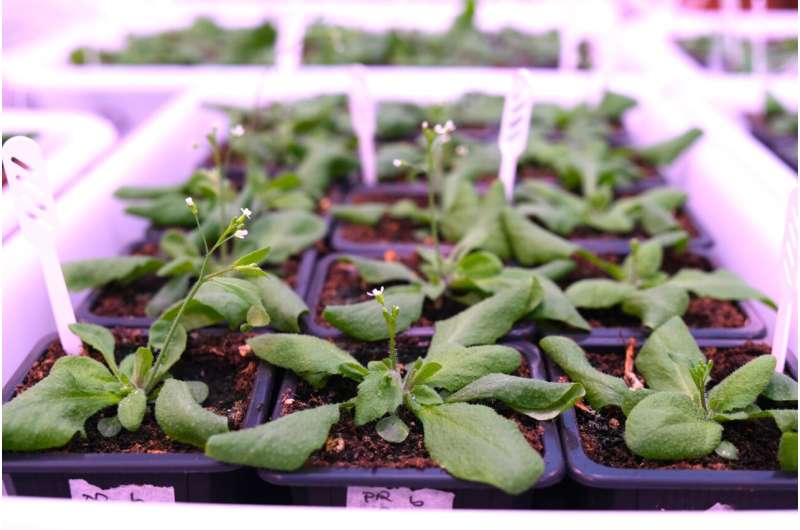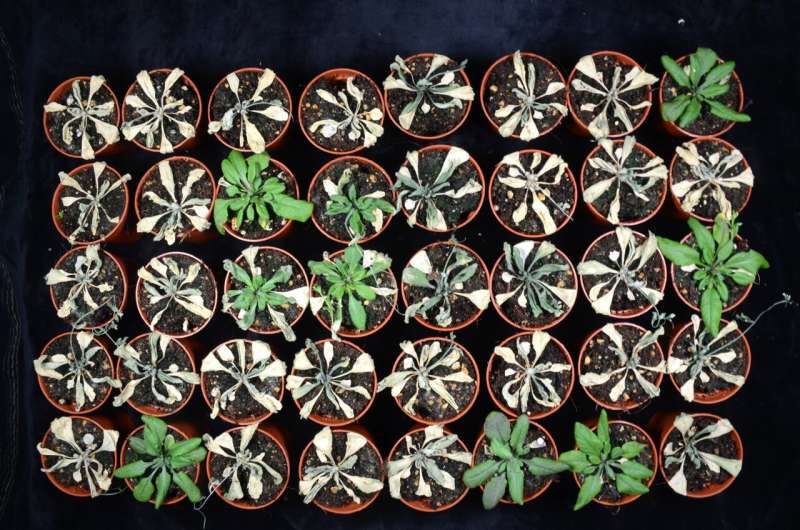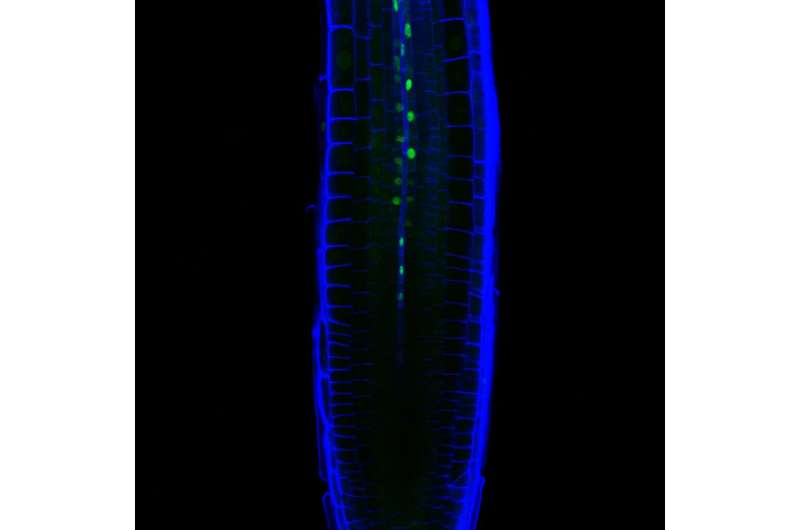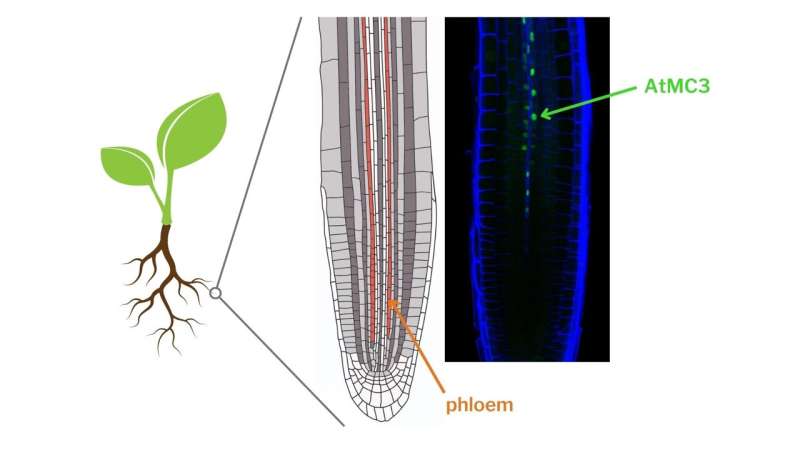This article has been reviewed according to Science X's editorial process and policies. Editors have highlighted the following attributes while ensuring the content's credibility:
fact-checked
peer-reviewed publication
proofread
A newly identified protein confers drought tolerance to plants

Researchers led by Núria Sánchez-Coll, CSIC researcher at the Center for Research in Agricultural Genomics (CRAG), have characterized for the first time the function of AtMC3, a protein of the metacaspase family that is involved in drought tolerance in the model plant Arabidopsis thaliana.
The work, published in the New Phytologist journal in collaboration with several international research centers and universities, highlights the importance of vascular tissue for plants to cope with adverse conditions associated with water scarcity and osmotic stress.
Plants, as sessile organisms that cannot move like animals do, have evolved ways to endure water scarcity and periods of drought stress. However, increasing drought phenomena due to climate crisis pose a serious threat to agricultural productivity.
The importance of the plant vascular system
Plants rely on their vascular system connecting distantly separated organs to coordinate an efficient response to water deprivation at the organismal level. The primary components of vascular tissue are the xylem and phloem, tissues which transport fluids and nutrients internally. While the xylem transports water and nutrients upwards from roots to stems and leaves, phloem distributes the soluble organic compounds made in the leaves during photosynthesis to the rest of the plant.

In this work, CRAG researchers have found for the first time that the AtMC3 protein is exclusively located in the phloem. More specifically AtMC3 is found in a particular cell type of the vasculature, called companion cells which are metabolically supporting the main phloem transport cells (sieve elements), as observed by fluorescence microscopy images of the tip of the root.
When facing drought stress, several signaling molecules such as the plant stress hormone abscisic acid (ABA) are synthesized and transported to all plant tissues to trigger a series of physiological responses that will protect the plant.
The present study describes that plants lacking AtMC3 are less sensitive to ABA and hence their ability to cope with drought stress is diminished. Moreover, altered levels of the AtMC3 protein lead to differential accumulation of stress-related proteins as well as defects in vascular development under stress conditions. This suggests that AtMC3 plays an important role for plants to respond adequately to osmotic stress and points out a possible new role for companion cells in stress sensing. Furthermore, phloem plasticity emerges as a useful tool to study and manipulate, in order to elucidate the plant responses to drought stress.

Tolerance to severe drought stress
When researchers increased the levels of AtMC3, plants increased survival rate and their ability to maintain their photosynthetic capacity in water scarcity conditions, indicating that AtMC3 alone can confer enhanced drought tolerance. More importantly, the altered levels of this protein did not cause any detrimental changes in plant growth, which "is a key finding to be able to fine-tune early drought responses at the whole plant level without affecting growth or yield in crops", states Eugenia Pitsili, first author of the study and former CRAG researcher, who is currently a postdoctoral researcher at VIB-UGent Center for Plant Systems Biology in Belgium.
This specific role of AtMC3 in drought stress aligns with the function of previously reported metacaspases, which have been linked to other stress responses such as those caused by pathogens or wounding.

This work opens the door to further studies to elucidate the exact mechanism of action of this protein to be able to understand the whole process in more depth and to evaluate whether it could have an application in crops.
Understanding the tissue specific mechanisms underlying the complex process of response to water scarcity is key to develop new tools to translate this knowledge into biotechnological and breeding solutions. These new tools will be crucial to improve crop performance in the field in a context of climate crisis.
More information: Eugenia Pitsili et al, A phloem‐localized Arabidopsis metacaspase (AtMC3) improves drought tolerance, New Phytologist (2023). DOI: 10.1111/nph.19022
Journal information: New Phytologist
Provided by Center for Research in Agricultural Genomics (CRAG)





















